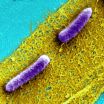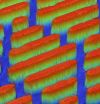(Press-News.org) The car of the future will be safer, smarter and offer greater high-tech gadgets, but be warned without improved security the risk of car hacking is real, according to a QUT road safety expert.
Professor Andry Rakotonirainy will speak at the Occupational Safety in Transport Conference (OSIT) on the Gold Coast on September 18-19 on the security threat facing drivers as vehicles become computers on wheels.
Professor Rakotonirainy, from QUT's Centre for Accident Research & Road Safety - Queensland (CARRS), has researched the security systems of existing fleet, future autonomous and connected cars and found there was little protection against hacking.
"The security protection on cars is virtually non-existent, it is at a level of protection that a desktop computer system had in the 1980s, the basic security requirements such as authentication, confidentiality and integrity are not strong," he said.
"What this means is that as vehicles become more and more connected and autonomous, with the ability to communicate to other vehicles and infrastructure through wireless networks, the threat of cyber attack increases putting people's safety and security at risk."
Professor Rakotonirainy said while most vehicles built within the last decade had features allowing them to connect to the internet and communicate with devices within the vehicle, the development of intelligent transport systems meant future cars would be connected to wireless networks as standard and would offer a higher level of automation.
He said all new cars were equipped with technology, called CAN-BUS, located under the steering wheel, allowing anyone to check the health of a vehicle and to control it.
CAN-BUS provides access to the "brain" of a car.
"This CAN-BUS allows all microcontrollers within a car to communicate to each other and is accessible via a mere plug," he said.
"It can be used to control almost everything such as the airbags, brakes, cruise control and power steering systems. CAN-BUS can be accessed locally or remotely with simple devices.
"This is just the tip of the iceberg as future cars will feature a tremendous mix of wireless networks and offer numerous opportunities to improve safety, entertainment and comfort.
"For example, cars will be wirelessly connected to other cars. If a vehicle stops ahead, a warning can be issued to drivers behind to slow down, or vehicles can automatically take control and slowdown without the driver's intervention.
"It will also be possible for vehicles to connect with infrastructure. For example, if a light turned red, but an approaching vehicle failed to slow, perhaps because the driver was distracted, a warning could be issued or action taken to automatically control the vehicle."
Professor Rakotonirainy said while these features had the potential to improve road safety, if hacked people's lives could be put at risk.
"If someone hacks into a vehicle's electronics via a wireless network and exploits the current security loophole, they can track or take control of it," he said.
Professor Rakotonirainy said it was vital for car makers, government and road safety experts to turn their attention to this global security threat.
"We need to be analysing the types of risk that that these intelligent vehicles are facing and work to provide a secure, reliable and trusted protection system," Professor Rakotonirainy said.
"A vehicle's communication security over wireless networks cannot be an afterthought and needs to be comprehensively considered at the early stages of design and deployment of these high-tech systems from the hardware, software, user and policy point of view."
INFORMATION:
The OSIT conference, hosted by CARRS-Q, brings together experts from all facets of transport safety including roads, rail, fleets, and mining to improve workplace health and safety. For more information on the conference, visit http://ositconference.com/.
Car hacking: The security threat facing our vehicles
2014-09-17
ELSE PRESS RELEASES FROM THIS DATE:
Survey finds benefits, risks of yoga for bipolar disorder
2014-09-17
PROVIDENCE, R.I. [Brown University] — Right now no one can say whether yoga provides clinical benefits to people with bipolar disorder, but in a new article in the Journal of Psychiatric Practice, researchers report survey responses they gathered from scores of people with the condition who practice yoga. What the collective testimony suggests is that yoga can be a substantial help, but it sometimes carries risks, too.
"There is no scientific literature on hatha yoga for bipolar disorder," said lead author Lisa Uebelacker, associate professor (research) of psychiatry ...
Cape Cod saltmarsh recovery looks good, falls short
2014-09-17
PROVIDENCE, R.I. [Brown University] — After decades of decline, grasses have returned to some once-denuded patches of Cape Cod's saltmarshes. To the eye, the marsh in those places seems healthy again, but a new study makes clear that a key service of the marsh – coastal protection – remains diminished.
"We've got the aesthetics back but the ecosystem function hasn't come back," said ecologist Mark Bertness, professor of biology at Brown and senior author of the study in the journal Biological Conservation. "The metric of a recovered habitat should not be 'Does it look ...
Recruiting bacteria to be technology innovation partners
2014-09-17
For most people biofilms conjure up images of slippery stones in a streambed and dirty drains. While there are plenty of "bad" biofilms around – they even cause pesky dental plaque and a host of other more serious medical problems – a team at the Wyss Institute for Biologically Inspired Engineering at Harvard University sees biofilms as a robust new platform for designer nanomaterials that could clean up polluted rivers, manufacture pharmaceutical products, fabricate new textiles, and more.
In short, they want to give biofilms a facelift, and have developed a novel protein ...
Phthalates heighten risk for childhood asthma
2014-09-17
Researchers at the Columbia Center for Children's Environmental Health at the Mailman School of Public Health are the first to demonstrate an association between childhood asthma and prenatal exposure to two phthalates used in a diverse array of household products. Results appear online in the journal Environmental Health Perspectives.
Children born to mothers exposed during pregnancy to higher levels of the chemicals, butylbenzyl phthalate (BBzP) and di-n-butyl phthalate (DnBP) had a 72 percent and 78 percent increase in risk of developing asthma between age 5 and 11, ...
New study examines the impact of socioeconomic position & maternal morbidity in Australia
2014-09-17
The risk of severe maternal morbidity amongst women in Australia is increased by lower socioeconomic position, suggests a new study published today (17 September) in BJOG: An International Journal of Obstetrics and Gynaecology.
Australians generally enjoy high standards of living; however, existing research has concluded that health disparities exist, in particular between indigenous and non indigenous Australians.
This case-control study aimed to explore the independent impact of socioeconomic position on severe maternal morbidities associated with direct maternal ...
A greater focus on socially disadvantaged women is needed to improve maternity care in England
2014-09-17
Women from lower socioeconomic groups in the UK report a poorer experience of care during pregnancy and there needs to be a greater focus on their care, suggests a new study published today (17 September) in BJOG: An International Journal of Obstetrics and Gynaecology (BJOG).
Differences in health outcomes amongst different socioeconomic groups have been demonstrated in many areas and have provided the focus for national initiatives in the UK to reduce the observed inequalities.
The Oxford University study, funded by the National Institute for Health Research, explores ...
NAMS issues first comprehensive recommendations on care of women at menopause and beyond
2014-09-17
CLEVELAND, Ohio (September 17, 2014)—The North American Menopause Society (NAMS) has published its key, evidence-based recommendations for the comprehensive care of midlife women—on everything from hot flashes to heart disease. The special feature, "The North American Menopause Society Recommendations for Clinical Care of Midlife Women," was published online today in the Society's journal Menopause. This is the first, comprehensive set of evidence-based recommendations for the care of midlife women freely available to all clinicians who care for women at this stage of life. ...
Sharks' skin has teeth in the fight against hospital superbugs
2014-09-17
Transmission of bacterial infections, including MRSA and MSSA could be curbed by coating hospital surfaces with microscopic bumps that mimic the scaly surface of shark skin, according to research published in the open access journal Antimicrobial Resistance and Infection Control.
The study modelled how well different materials prevented the spread of human disease bacteria through touching, sneezes or spillages. The micropattern, named Sharklet™, is an arrangement of ridges formulated to resemble shark skin. The study showed that Sharklet harboured 94% less MRSA bacteria ...
Violent origins of disc galaxies probed by ALMA
2014-09-17
An international research group led by Junko Ueda, a Japan Society for the Promotion of Science postdoctoral fellow, has made surprising observations that most galaxy collisions in the nearby Universe — within 40 million light-years from Earth — result in so-called disc galaxies. Disc galaxies — including spiral galaxies like the Milky Way and lenticular galaxies — are defined by pancake-shaped regions of dust and gas, and are distinct from the category of elliptical galaxies.
It has, for some time, been widely accepted that merging disc galaxies would eventually form ...
Global shift away from cars saves US$100 trillion, eliminates 1,700 MT of CO2 pollution
2014-09-17
NEW YORK (17 September, 2014)—More than $100 trillion in cumulative public and private spending, and 1,700 megatons of annual carbon dioxide (CO2)—a 40 percent reduction of urban passenger transport emissions—could be eliminated by 2050 if the world expands public transportation, walking and cycling in cities, according to a new report released by the University of California, Davis, and the Institute for Transportation and Development Policy (ITDP).
Further, an estimated 1.4 million early deaths could be avoided annually by 2050 if governments require the strongest ...



